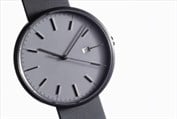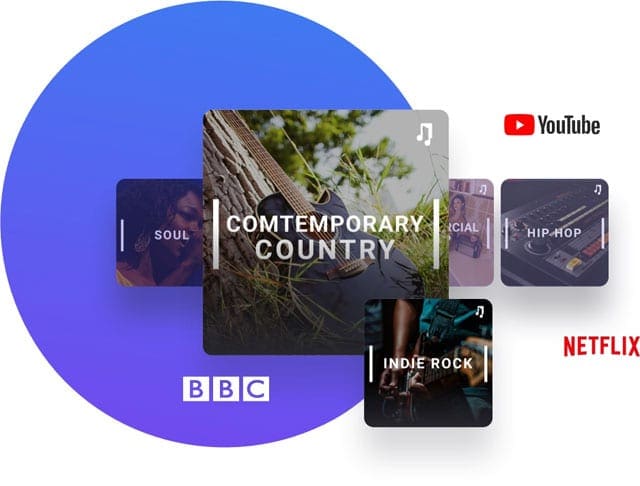Recording Studios – Setting up and running a commercial studio
As recording engineers and producers, we find ourselves in an ever-evolving landscape of music recording and production. It’s become a cliché to say that recording music has never been easier. The advent of digital computing and cheap manufacturing of components and equipment has reinvented the audio wheel. Additionally, it has given way to an affordable and accessible practice where music can be written, recorded and produced with great flexibility of budget in a variety of locations and environments.
Here we’ll look at the consideration when setting up and running a commercial studio. A “commercial studio” is a broad term, covering small all-in-one control room/live room setups, all the way up to multi-room studio facilities. We will look a little beyond the smallest setups here so as to cover more ground in discussions. And consider a facility that could function in a broad capacity toward a wider range of projects and clients.
When considering the following you should also be thinking about the question
“What type of studio will this be, and what services will you be looking to provide?”.
This question informs many things, like how large a footprint your building will need, how many audio rooms your facility will need, the cubic volume of each space, the acoustic properties of those spaces, the type of equipment you’ll need, how you can budget for it, and the list goes on.
The Space
Let’s assume you are a small to medium-sized audio production company that takes regional and national clients. You would like to build a new audio recording and production facility to cater to your growing client list. This includes bands of various sizes and genres, as well as voice-over work. In terms of recording spaces, it is clear that you will need a larger space to cater to bands, and a smaller booth to deal with VO artists. Let’s look at the considerations of each:
When providing a room for bands you need to consider a number of things:
Room Size
The room needs to be of a size that can fit your largest likely number of musicians in any one band. It also needs to represent the genre of music you’re most likely to deal with. For example, a dub/reggae drum sound, or a triggered metal drum sound can work with drums in a small room. But a rock kit or a jazz ensemble might require more ‘air’ on the track and thus require a larger space.
Put in real terms, a live room with a volume of around 150m3 (or larger) will start giving a nice sense of space. While a room below 60m3 should be considered more towards a booth, giving no desirable musicality in the sense of space.
With a larger space, your first reflections are delayed enough not to comb filter the initial signal. And you can get a good distance between the source and room mics. With added acoustic treatment in the form of diffusion, this can start to create a pleasant sense of space or ‘air’ on the tracking.
If you’re in a position to build your room(s) from scratch you should also consider dimensions (LxWxH) in terms of their relation to each other. Given that sound wavelengths are of a fixed distance, a room of 3m x 3m x 3m, for example, will give a very strong build-up of frequencies that have a cycle divisible into 3metres.
These are called standing waves and they should be spread as evenly as possible in each octave all the way up to 200-300Hz. It can, therefore, be sensible to employ certain non-divisible ratios for LxWxH or to look at rooms with non-parallel walls and ceilings.
If you go with the rectangular room there’s a number of suggested ratios you can try, and plenty of free online calculators that give you feedback on different dimensions. This can be useful as you will be able to know your problems, prior to building your space. And can plan to mitigate against any serious frequency build-ups before investing in a room meant for music.
Soundproofing
Soundproofing is often the most expensive part of any music studio development. And practical considerations must be had in order to decide how much is needed. You can look at the location in relation to soundproofing requirements. A farmhouse conversion, for example, might do fine with less treatment, where neighbours aren’t an issue. However, in built-up areas, things become much more difficult.
Take into consideration the type of clientele you have. You should have an idea of the decibel levels you are likely to get in relation to the type of music or artists you work with. Think about your local area and how much of that sound energy you can let escape into neighbouring spaces.
If you work with acoustic artists, jazz ensembles, or work solely in, you might find a larger concern is sound entering the recording space from outside. Particularly with lower frequencies like passing buses and trains, that will get on to the microphone. Therefore your soundproofing needs to achieve ratings above the dB level of the ambient external environment.
If you’re recording rock or metal bands, dealing with lots of amplified music and hard-hitting drummers, you need to consider the bleed from your live room and provide treatment that will start to deal with the 115dB+ that they might create. A note to keep your expectations grounded is that, if you are building a room from scratch, you will need a budget of many tens, if not hundreds of thousands of pounds, to near silence the bleed of a full band. There are no magic products out there that can short cut the physics of acoustic panels and sound transmission.
Having a budget of a few thousand pounds just isn’t enough to entirely stop the bleed of a drum kit between two adjoining spaces. As said, there are no secret tricks, just a practical understanding of physics, the correct materials, and (most importantly) the correct application of those materials!
Soundproofing falls into two areas: airborne transmission and mechanical vibration. The common method is to employ two leaf structures that work as a Mass-Air-Mass system. That is a wall (Mass) with an air gap (that acts like a spring) then a second wall (Mass).
This wall system can be improved both by increasing the air gap between the walls and by increasing the mass or density of each wall. Damping membranes or products like Green Glue can be used in between sheets of plasterboard to further improve the performance of each wall. Fibreglass and mineral wool can also be used in the air gap to again improve the performance of these wall systems.
It’s very important to ensure that the two leaves are mechanically separate, i.e there is no solid connection between the two. A large amount of low-end energy will escape by exiting the room’s physical structure, with this vibrational energy then emanating out into neighbouring spaces that are mechanically joined and being heard as sound leakage. With the MSM system, the walls either side of the air gap should be separate and therefore not susceptible to mechanical vibration. Often the problem of mechanical vibration is through the floor, and this leads to one of the most difficult and controversial areas of soundproofing, floating floors.
It should be said that without a good scientific understanding of the materials and methods involved, the DIY builder shouldn’t undertake the process of trying to float a floor. You must calculate your live load and a dead load of a structure, choose an appropriate method of floating the space – maybe rubber ‘pucks’ or springs – look at their [scientifically tested] range of deflection against your loads, position them accordingly to lighter and heavier points, and ensure they will always remain in their sweet spot of deflection. You will then pour a suitably heavy slab (potentially 200mm of concrete) on top of them.
The process is dense with engineering and enormously easy to get wrong, it is absolutely not just a case of putting some rubber underneath some wooden on which to build. You can waste huge proportions of build budget incorrectly floating a floor and see absolutely zero with soundproofing, even decreasing the effectiveness of your overall treatment. Furthermore, in the event you are not on a ground floor, this could well overload the existing structure you are building on, given the large mass needed in the floated slab, putting the whole structure, and peoples lives in danger.
A more common, slightly simpler method of floor separation is to cut the concrete slab back (assuming your room is a ground floor space, sat on a slab that is itself sat on solid earth!), and then rebar and re-pour the perimeter on which you inner leaf wall structure will sit.
It goes without saying however, that proper consultation should always be taken with qualified professionals when dealing with structural elements of any building, be it your own garage or commercial space.
One final consideration with sound-proofing is that your level of reduction is only as good as the weakest part of your structure. Spending a fortune to get 70dB reduction in a wall system, but fitting 35dB doors means your room is only as good as the door. If you’re fitting windows, the same applies.
HVAC
After you have soundproofed your space – of which one aspect of soundproofing is to make the structure as airtight as possible – you must then provide some means of ventilation. Beyond the obvious fact that people will use up the oxygen in the space, inadequate ventilation can lead to a buildup of heat, moisture and CO2. All of this can contribute to a poor environment for a musician and the instrument to perform in. HVAC stands for Heating, Ventilation and Air Conditioning.
You can also consider the need for dehumidification of the space if you are likely to work with classical artists or with artists whose instruments require a stable moisture content in the air. You should also have your ventilation system specced to accommodate the largest number of people you are likely to have in the space. In most regions and countries there are regulations on how big a volume of air per person that must be recycled in one hour. You must consider this in your commercial space.
Acoustics and treatment
Once you have the right space, adequately soundproofed and ventilated, you can think about the acoustics in the space. Now is a good time to use a calibrated microphone and software to take accurate measurements of the room response. This should give you a good idea of what treatment methods to employ.
There are two main strands of acoustic treatment: absorption and diffusion. Based on your measured room response you can start to put this treatment into the space to tune the room to where it needs to be. It’s a fine balance though. With too much absorption and you will start to have dulled and unnatural sounding instruments, while with just diffusion or no treatment you will have a very reverberant space, and start to lose the definition of the instrument in all but the closest mics. Consider the fact that with effective soundproofing, the energy of those sound waves will have nowhere to go, and space will quickly become awash with reflections.
With absorption, you must pick the right treatment depending on the frequency that you want to start controlling or bringing down. It is a given that controlling very low frequencies is much harder, and requires much more materials and technique than controlling high frequencies. A good starting point is bass traps, initially in the corners of rooms where the boundaries of LxWxH meet. You can also tune certain absorption methods (like Helmholtz resonators) very precisely to target specific frequencies only, like a standing wave at 105Hz for example.
Start with the low-frequency absorption as this is harder to control than the higher frequencies, which will invariably get partially absorbed as part of the lo and mid-treatment. If needs be you can re-introduce some high frequency, to bring back some natural sense to the room, by using diffusion.
With diffusion, you are trying to take a sound wave and break up its reflection to many smaller scattered reflections. Like with absorption, diffusion treatments will be frequency-specific, and you should look to vary your treatments to target the full audible frequency spectrum. Low frequencies, due to the much larger wavelength, require much larger devices for effective treatment.
The idea of egg boxes on walls is a simple interpretation of diffusion, however, it is completely ineffective! Computer modelling has led to better and better diffusers, however simple poly diffusers and binary diffusers are cheap and effective tools that can be employed.
A caveat should be added with regards to listening spaces. Much of the above applies, however, acoustic treatment should be designed to further reduce reflections, and various design methodologies can be applied to improve the listening environment. These could be Live End Dead End (LEDE), the Non-Environment, the Reflection Free Zone (RFZ) and many more besides. Research into different designs should inform what you think is best for you and your budget. You should also ensure any listening room’s longest dimension (say corner to corner) is equal to or longer than the half cycle of the lowest frequency you will want to reproduce in that space. If a room is too small, that frequency and those below it cannot be supported and the next harmonic of each frequency will be disproportionately loud in compensation. Monitoring a kick drum or bass guitar, for example, could become misleading, with EQing decisions made in relation to misrepresented frequency levels.
Hiring builders to do the work
If you are building a new music studio space from scratch and are hiring in local builders to do the manual work, always check that they appreciate the specific needs that come with acoustic sensitive spaces. There are countless stories of local, and otherwise completely capable builders, with no experience of studio building not applying the correct methods and wasting large sums of money.
There are also plenty of stories where they will insist that their method (which might be fine for a generic build) is the right way. You should always be completely up to speed with what they are doing day to day and making sure they understand exactly what is required and why.
Equipment
After the considerations toward space is made, and a room is sounded as preferred, you are then most likely going to start thinking about equipment. In the recording industry “gear” is an obsessive topic, and the line between what is a need and what is a want is often a grey area! It’s also a time where the bits of kit that are essential to record and mix is more affordable than ever.
It’s entirely possible to record and produce a track with just a handful of microphones and a few good preamps and get good commercial results. However, while this is a feasible model for the bedroom producer that knows the ongoing specifics of their sound, a commercial operation should look to have a bit more choice and variety in equipment. A broader range of equipment will allow for more versatility in approach to each project. An engineer should be able to tailor their approach to the act or project, and the more equipment available to them of varying character and effectiveness the bigger the selling point drawing the client to that specific commercial facility.
Microphones
In the first instance, it is vital to building up a good microphone collection. Studio Microphones vary hugely in their sound depending on whether they are a Large Diaphragm Condenser [LDC], and Small Diaphragm Condenser [SDC], a Dynamic mic, a Ribbon Mic or a Boundary mic (another form of condenser microphone). Changing the pieces of equipment such as a microphone on a source can dramatically change the overall tone of the instrument. When you are considering the position of each instrument within a soundstage, changing a microphone can be as good as, if not better than spending time EQing the instrument within the mix later in the process. With respect to ribbon mics, no amount of treatment after the fact can really recreate the vibe got from using a ribbon in the first instance.
It would be reasonable to assume that a commercial studio should have mic stands, a pair of LDCs, a pair of SDCs, and a selection of dynamic mics within a mic collection. It is also very wise to spend as much of a budget as affordable on a good vocal mic. Budget permitting a ribbon mic is also a useful tool to have within a burgeoning microphone collection.
Preamplifiers
After the microphone, the next tool that will add variety and versatility is the microphone preamplifier. It is certainly possible today to record with neutral, budget preamps and impart any colour and tonality after the fact with plugins “in the box”. However, the musicality of a more expensive preamp can make a noticeable difference in the end result. When you AB a budget preamp with an expensive one, say a Neve 1073, the difference is indeed small.
However, if that small difference in tonality is stacked up over the course of 30.. 40.. 50 tracks within a project, the whole thing will start to sound richer, bigger and more musical.
When it comes to preamps there are two routes to take, neutral preamps that are designed to be transparent, and preamps that add colour. The latter is designed to enrich the source signal and impart additional character, while the former is useful for capturing an honest and clean version of the audio. For character preamps people will often refer to preamps that have valves or transformers within the signal path – two common ones being the Neve 1073 with a transformer and the Universal Audio 610 with a valve. Neutral preamps are often solid-state amplifiers solid-state the likes of Audient or Millennia preamps.
A good starting position with regards to preamps would be a rack of more affordable neutral presents, alongside a few character pres that can be used for lead elements in a track, such as a snare or vocals.
AD/DA Conversion
After microphones and preamps, consideration can then be given to analogue-to-digital and digital-to-analogue (AD/DA) conversion. The quality and price of your converter should not exceed the quality of your preamps. The gains to be had from the converter are marginal in comparison and allocation of the budget should reflect this.
It would be worth considering channel count however when choosing your converter. If you are likely to record larger ensembles if might be wise to have a 24×24 or a 32×32 channel count. You can always hire in or borrow additional preamps, but it is much more difficult to plumb into your system another converter on a one-off project.
Analogue Desks
Some studios with larger budgets will opt to purchase a desk, also known as an analogue console or mixing console. While the cost is prohibitive for many, the advantages for those that can afford a desk are that you will get a large channel count of high-quality preamps, often with EQ on each channel; routing capacity for things like headphone sends, effects sends, and summing of audio; a monitoring section for listening to various audio sources; and summing of tracks during mixdown.
Desks can come in various sizes and with a range of features. However, with more and more engineers and producers working “in the box” – that is, tracking in to and recording/ mixing with user friendly DAW software on computers – the need and subsequent prevalence of large-format recording consoles is becoming a thing of the past. There will always be a call for and practical need for large consoles, however, in running a commercial studio, it is by no means a necessity in this day and age.
Speakers
The last key consideration for equipment is speakers (also known as monitors). Given that this is your window that will allow you to review the audio you are recording or mixing, the importance of monitors in the studio cannot be understated. However, before you go and spend thousands of pounds, you should consider how best to spend that money. While cheaper monitors might not give the best low-end clarity or depth of a mix, for example, a cheaper monitor will, in a professionally treated listening space, gives a better representation of audio than expensive monitors that are poorly positioned in an untreated space.
No amount of money spent on speakers will make a bad listening environment stop being bad. A speaker can only ever be as transparent as space it is in, so focus first on the listening room, and then make a decision about the speakers you need.
The things you should then consider include the size of the speaker to get, whether to get a two-way or a three-way monitor and whether to get active or passive monitors. You should also consider whether to get near-field, mid-field or main monitors. A good starting point is to get a pair of near fields that will be positioned close to the listening position. The size of the speaker is usually determined by the woofer dimension – usually somewhere between 5” and 10”. If your listening space is large, with a lot of absorption you might want a larger woofer with more power. However, with a two-way speaker (a speaker with one cone and one tweeter) this can have a small effect on the mids as the tweeter must extend lower down in frequency to accommodate the poorer response in the mids of the larger woofer.
For even larger spaces the answer to this is 3-way speakers, where a second mid-tweeter is employed to fill the gap between the woofer and high tweeter. The cross over between each element is smoother and these speakers tend to be more detailed in the mids and offer more extension in the low end. They are often however considerably more expensive.
For the most part, active monitors should suffice in a commercial studio, as the manufacturer should have built an onboard amp that will best suit the speaker and tweeter. However, if you are considering flush mounting the speaker, it may be wise to get passive monitors or active monitors where the amp can be removed. The amplifier is accessible then and also can’t overheat while the speaker is housed in the wall.
Analogue vs. Digital
Before moving on from the discussion on equipment, mention should be made in regards to the industry discussion of ‘analogue vs digital’. Previous to current practice audio used to be tracked from preamp to tape, therefore never going through any digital conversion and as such always remaining in the analogue environment.
During the conversion process, the smooth curve of a waveform becomes stepped into bits of information, with some amount of the original signal lost to those steps. As digital conversion became available, the payoff off convenience and workflow came at the cost of a noticeable change in the timbre of the audio when going through the digital computations. Some detail of the audio was lost and the sound tended toward a colder, less musical feel – hence the analogue vs digital arguments.
Technology would take a long time to catch up and produce converters that wouldn’t impart this aspect, and these days the sonic advantage of remaining in the analogue realm isn’t such a favourable thing. Nowadays the pros and cons can be argued to be more about subjective flavour, and how digital recording might encourage a more lazy attitude toward performance and track stacking. What is certain though is that the discussion is very much a subjective one these days with no real right or wrong answer.
Reaching the marketplace
Having a presence online should be the first port of call for any outreach. A clean and navigable website, with images and descriptions, and a clear direction of how to contact the studio and book is very important and should become a regular source of enquiry. If possible you should point to examples of projects that reflect well on the studio, and give an indication of the type of work you regularly do and can facilitate in the space.
You can achieve this through the many website building platforms like Squarespace and Wix, however, consideration should also be given to SEO [Search Engine Optimisation]. Working with a web development company might prove beneficial if you operate in a city or area with a number of studios. When somebody Googles “recording studio in X location”, you want to feature near the top of that first page of results. Investment here can soon see a return.
When it comes to broadening the client base, and reaching further afield, you should employ social media. Over the last decade, social media has become a huge part of personal and professional online habits. With recording studios, there’s an obvious need to have an active presence. Posting about the studio, about equipment, techniques or the like, is a great way to engage with a wider audience and build a bigger reputation.
In music, across the industry, word of mouth is a key informer in the decisions people take. In studios, musicians are trusting the facility with not just their money, but their art and their time spent efforts. They will look to other musicians in their scene, or their city, to see what experiences they have had and what suggestions they might give. It places a need to ensure that every client you work with is given the best possible experience and leaves with the best possible piece of audio.
This can grow to become one of the absolute best marketplace developments a studio can have. The benefit is noticeable and it shouldn’t have cost any more money, just more courtesy and consideration given to the client. When you’re doing things right, not only will your customers come back to you, but you will soon find other bands or artists coming to the studio saying they were recommended by someone who has previously been in the studio.
It can be initially difficult to build up momentum, given you need clients to get clients. It can be wise to offer studio time for free, or for a reduced cost, to artists within scenes that you would like to work more in.
One method that ties in both social media, and conveying the good results available at your studio, is live sessions. A session can cost time and effort, but given the right approach, they can be a great way to show off the studio, work with exciting artists and give a great indication of the kind of quality possible by working in a commercial space.
Outside of the music industry, you should also consider alternative sources of income. Make contact with and get to know all your local educational facilities and cultural spaces. That includes venues big and small, theatres, galleries, etc.
Many smaller studios will also make a reasonable income by catering for the party market, be it child parties, hen and stag dos and birthday parties.
A&R and artist development
Inevitably you will come across artists that impress you and that you would be keen to work within the studio. It is normal that engineers and producers will look to offer reduced or no fees and ask for points on a record, or deferred fees in relation to project success to work with burgeoning acts. Sometimes artists are operating on a limited budget and the producer has a belief that with their input the artist could see a good amount of success. This is great, however, it is vital that such arrangements are communicated fully and explicitly before any project is undertaken.
Generally, an artist will be happy to sign over some amount of points, or agree to a fee postponement dependent on success, so long as they are aware at the beginning and feel happy with the arrangement. Being open and honest right at the beginning of any special offer is critical.
Finances
This blog will end on the topic of finances. It goes without saying that setting up a professional studio, compared to a home recording studio, can be extremely expensive. It isn’t unreasonable to assume a cost upwards of say £100,000 to build a professional, multi-room, middle of the industry studio facility from the ground up. You can keep on doubling that figure too, depending on just how large and well-performing you want that facility to be.
Then, you can add the same figure again if you want to stock it with the most desirable equipment to attract the best artists and engineers/producers. You can spend a million and still want more! That doesn’t mean to say that you can’t get somewhere with £10-£15k, but your expectations should be realistic, and your best bet should be to play a long game!
Studio Rates
Many grassroots musicians cannot afford the rates of a high-end studio, and initially, those musicians will form the basis of a fledgeling studio’s income. If there are other studios regionally you can use their prices as a benchmark to what your facility might be worth. Try to reflect the infancy of your facility in your pricing and work to build up the customer base by going a little lower than the market value of an established facility. If you’re working from loans to finance your project, budget repayments to factor a slower initial pace of income with a lower than expected rate card.
If you are operating as both studio owner and studio operator/engineer, you should be mindful of where your own abilities are with regards to your practice, as well as the general level of the studio. In this, you should look to find out what the going rate is for someone at your level per track and per album. Don’t assume a new studio facility with all the bells and whistles is suddenly going to make you better in your abilities to mix or record as it won’t do this overnight.
Growth
Set out with a 1, 5, and 10-year business plan and understand how you can reach the more lofty ambitions you might have through strategic growth. Keep checking back to this plan and see how realistic your expectations were with each year. You need to rely on a market that offers no guarantee of their regular custom, and with good months there will be bad months.
Only real time will give a good indication of what kind of market place there is in your region, what kind of growth is available, and how you can shape your rates to bring about growth and expansion. Many regions will have the story of the person who had a glut of money from another life and fancied a try at music without the hard-earned experience and groundwork required. Often a big sum of money was spent and a recording studio was built, only for it to end up being underused and overburdened by the unrealistic overheads and lack of customers. The moral of the story is to start small and to grow into the studio you want to be. A whole lot of patience is key to this, and it comes with the added benefit that as you steadily grow your studio and increase your revenue, your skills and your customer base will be growing with you.
FAQ Section
Q: What do you need to start a recording studio?
Here is a list of recording equipment you need to start a recording studio.
- A computer (PC or Mac)
- Digital Audio Workstation (DAW) The digital audio workstation is the primary software used to record, edit, and mix music on your computer
- Audio Interface
- A microphone (condenser mic)
- A pair of headphones (closed back headphones)
- A set of studio monitors (speakers)
- Some cables to connect your speakers, audio interface to your computer (mini, ¼ inch jack)
- A midi keyboard
Q: How do I set up a recording studio in my room?
- Choose the room available in your house (bigger the better)
- Clear out the room, but think about leaving cupboards, as they may help with soundproofing
- Position your workstation (desk) centrally between two of the walls
- Position your equipment (keyword, computer, speakers in a logical position
- Connect up all your gear and test it’s working correctly
- Reposition your studio monitors according to the sound generated and test it with well-known recordings you are familiar with their sound to compare
- Add acoustic treatment (get specialist advice on this)
Q: How are recording studios designed?
An isolation booth is a standard small room in a recording studio, which is both soundproofed to keep out external sounds and keep in the internal sounds, and like all the other recording rooms in a studio set up, it is designed for having a lesser amount of diffused reflections from walls to make a good sounding room for professional mixing and mastering.
Q: What software do professional recording studios use?
A digital audio workstation, or DAW, is an electronic device or piece of software that allows for recording, manipulating, and creating audio. Within the music realm, popular software DAWs include Ableton, Pro Tools, Cubase, Logic Pro, GarageBand, Presonis, Reaper & Fruity Loops as the main most popular software.
Q: How can I promote my recording studio?
Here are some top tips for promoting your recording studio
- List your business online on google business, yell, bing and other local directory websites so please searching the internet can find you
- Create your own website using Mix, WordPress or hire a professional to design and build one for you
- Attend local networking events, live music sessions and music-related community venues.
- Use social media to highlight your client’s success and activities in your studio (with their permission)
- Work with the local schools and colleges to support the community, which in turn helps spread the word about your services
- Advertise locally, especially if there is a music store
- You have to treat your studio as a normal business, so search for advice online for ideas and be creative
Q: How much does it cost to record in a studio?
This will depend on the level of the producer and recording studio, you tend to get what you pay for, but as a guide, an album may take 2 – 4 weeks to record, mix and master (12 songs) and a single two days, if it’s fairly straight forward. One song could cost from $300 to $1000 and an album, the day rate would be between $250 and $800, so in total, an album would be between $3,000 to $20,000.
Q: How much should I charge for mixing and mastering?
This will depend on your set up, client roster (showreel) and experience. Mixing is a much longer process than mastering alone, so how much should you charge? A good mixing engineer will have a day rate and may not have their own studio, so you could be looking at the cost to hire the engineer plus the cost to hire the studio. An estimated cost would be between $200 – $500 for the engineer to mix your recording, mastering would is priced on a per track basis (normally) and is between $25 and $150 per song. Obviously, this is digital mastering, as vinyl mastering has additional costs for the lackers and parts.
Q: How much do mixing engineers make?
It’s reported that sound engineers earned an average of $64,000 per year, equivalent to $27 per hour. Salaries reported for this occupation was $46,750 per year, with the middle-earning sound engineers earning between $30,000 and $75,000 a year.


































